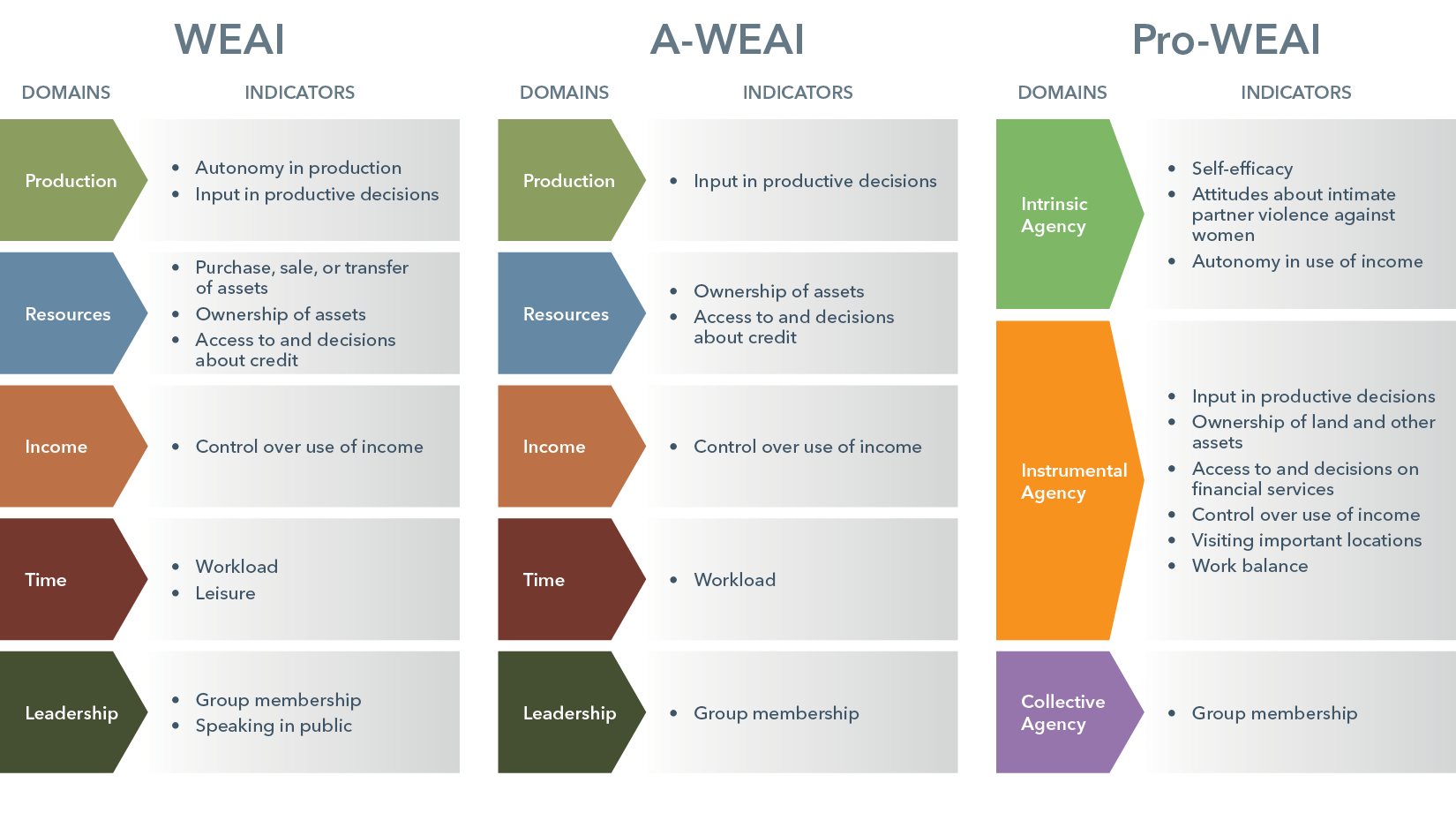There are several different versions of the Women’s Empowerment in Agriculture Index (WEAI). All versions of the WEAI quantify women’s empowerment and measure gender parity, but are modified for different purposes.
- The original WEAI, released in 2011, is an aggregate index which reports empowerment at the country or regional level. The WEAI is based on individual-level data collected by interviewing men and women within the same households.
- The abbreviated WEAI (A-WEAI) was released in 2015, and builds on the original WEAI. It shortens interview length and modifies questions that were difficult to implement in the field, while maintaining cross-cultural applicability.
- The project-level WEAI (pro-WEAI), released in 2018, measures women’s empowerment in various types of agricultural development projects. The pro-WEAI adds specialized project-relevant modules, such as a module specific to nutrition and health projects. Pro-WEAI also includes qualitative tools to help projects understand local definitions of empowerment. In addition, the quantitative pro-WEAI tool was developed using both quantitative and qualitative work.
- The pro-WEAI for Market Inclusion (pro-WEAI+MI; formerly called WEAI4VC) measures empowerment across the value chain. Pilot studies assessed empowerment of men and women in different value chains and as different types of value chain actors. Pro-WEAI+MI was developed using both quantitative and qualitative work.
For key readings specific to different versions of WEAI, please visit the corresponding version page.
Not sure which WEAI is right for you? Click here for an interactive tool that will guide you through the selection process.
Comparison of WEAI, A-WEAI and pro-WEAI
The table below compares WEAI, A-WEAI, and pro-WEAI indicators. A-WEAI uses six of the original ten indicators from WEAI. Seven out of the ten indicators in pro-WEAI build on the original WEAI indicators with modifications, and three indicators are new (attitudes about IPV against women, self-efficacy, visiting important locations) and stem from topics that the projects themselves suggested.
